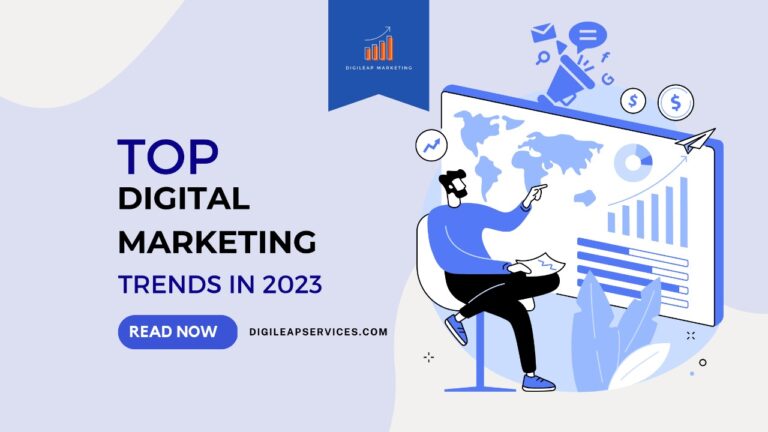Emerging Trends in E-commerce Marketing
Using a few simple taps on your smartphone, online shopping is now simpler than ever. The most well-liked social media trends of 2023 correlate with e-commerce marketing, which is not simply a fan favorite. Because customer behavior is continuously changing, savvy social media marketers and e-commerce managers need to stay up to date on the latest e-commerce marketing trends. Product introductions now take place online as well as in real life. The digital one is equally, if not more, significant.
Here are the top e-commerce trends you should be aware of right now:
- Rapid adoption of mobile shopping
Shopping on your phone is just one aspect of mobile commerce. It encompasses all purchasing actions performed on a mobile browser or app, including those involving mobile ads, sales representatives, smartphone brand browsing, etc. And because mobile shopping overlaps with other popular e-commerce features like virtual shopping, live stream shopping, and in-app purchases, it is predicted that its use will increase in 2023.
How to respond to this:
- Use your current mobile shopping features, then try out popular commerce tools.
- To keep ahead of the competition, pay attention to innovative e-commerce product features.
- Social commerce is still expanding and changing
As we know the consumer is the king, lately consumers’ wants are changing and becoming complex with their decision to purchase.
In 2022, 98% of customers planned to make at least one purchase through social shopping or influencer recommendation, according to Sprout’s social shopping research, and this trend isn’t going away. There’s a good possibility that your competitors are selling on social media now or plan to if you haven’t already. The rise of influencer marketing is on the rise and social media platforms help businesses to tap into this market.
How to respond to this:
- Consider adding fresh in-app purchasing capabilities to social media.
- Assist your clients where they are. Which social shopping tool or function do they use the most?
- Give exclusive in-app discounts and sales to social shoppers as a reward.
- Personalized shopping is favored
Consumers in both B2C and B2B markets are looking for customized e-commerce experiences and are more likely to stick with retail businesses that provide a specialized service. In addition to providing a consistent shopping experience across many platforms (website, mobile, and social), personalization can also include product recommendations, deals, and discounts. Additionally, it may involve offering a range of payment options.
How to respond to this:
- By providing product recommendations and special deals, scale customization initiatives.
- Think about including modern payment options.
- Make enhancing customer service a priority across all of your social media platforms.
- Artificial Intelligence will help brands learn more about shoppers
Artificial intelligence (AI) is expanding swiftly as the need for customized shopping experiences rises. AI can gather information about customer buying habits. This can include a customer’s shopping habits, preferences when looking for goods or services, and the moment of purchase. Using this data, brands may provide a customized buying experience.
Brands may train bots to communicate more effectively as well as to offer better customer service and products based on the moods and preferences of their customers.
How to respond to this:
- Look for the best AI tools for e-commerce marketing.
- To gain practical knowledge, try using several AI tools.
- Pay attention to the news in the industry on machine learning and artificial intelligence.
- Consumers are concerned about privacy and zero-party data
While some customers prefer a customized experience, others are worried about their data and privacy. Although more customers are aware that e-commerce sites gather data, they aren’t necessarily aware of the purposes for which it will be used or whether it puts them at risk. Regarding the advantages of big data and how it affects the personalization of shopping experiences, opinions are divided.
How to respond to this:
- Think of using zero-party data and gathering customer information internally.
- To protect your consumer data, decide on and put in place the best security and privacy procedures.
- Describe how your company gathers, stores, and uses customer data openly and honestly.
- Increased voice search
When it comes to social commerce in 2023, marketers are employing cutting-edge technologies like voice search. Smart speakers and voice assistants are widely used by consumers to carry out daily tasks. Customers may browse a brand’s numerous collections, select product sizes and colors, and ask inquiries right there in the store. As more people use these devices, they’ll probably start using voice search to buy everything from groceries to clothing.
How to respond to this:
- By utilizing semantic search and standard search engine optimization, voice search can be improved.
- Use natural language such as “who,” “what,” “where,” “why,” “when,” and “how” in product or service descriptions to improve them for search.
Over the upcoming year, keep a look out for these new e-commerce marketing trends. Both the customer and the business benefit from improved customer experiences and brand experiences made possible by new technologies. Contact Digileap Marketing Services for more insights into digital marketing strategies. Subscribe to our Newsletter so you will always stay connected with us.












